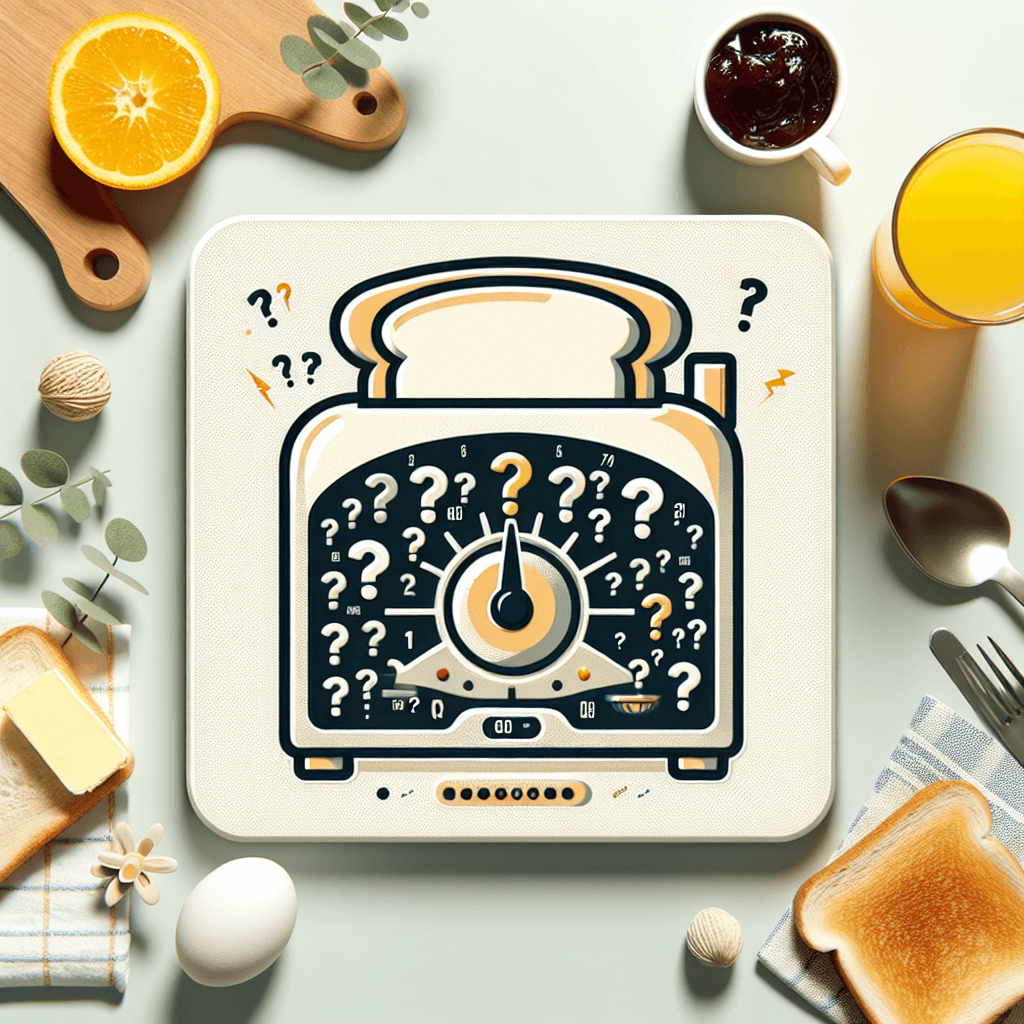What do the numbers on a toaster dial actually represent, if not minutes
That dial on your toaster isn't a timer, and learning the simple science of what those numbers actually control is the secret to achieving your perfect slice every single time.


Too Long; Didn't Read
The numbers on a toaster dial are not minutes. They are an arbitrary browning level that controls a timer or thermostat. A higher number means the heating elements stay on longer for darker toast, but the actual time varies depending on whether the toaster is starting cold or is already hot from a previous cycle.
Cracking the Code: What Do the Numbers on a Toaster Dial Actually Represent, if Not Minutes?
We’ve all been there. Standing in front of the toaster, slice of bread in hand, pondering one of life’s great breakfast mysteries. Should you set the dial to 2? Or is today a 3.5 kind of day? We instinctively think of these numbers as minutes, but a quick glance at a clock reveals the truth: a "3" on the dial rarely, if ever, corresponds to three minutes of toasting time. This common misconception leaves many of us in a cycle of burnt edges and undercooked centers. So, if the numbers aren't minutes, what on earth do they actually control? This post will unravel the fascinating science and engineering packed into this humble kitchen appliance, revealing what that dial is really doing.
It’s a Scale of Browning, Not a Clock
The simplest way to understand the numbers on your toaster is to stop thinking of them as units of time and start seeing them as an arbitrary scale of intensity or "doneness." A "1" is the lightest setting, and a "5" or "6" is the darkest. The number you select doesn't tell the toaster to run for a specific number of seconds; it tells the internal mechanism how much browning to achieve before it pops the toast.
This is why your first slice of toast in the morning often takes longer than the second. The toaster is working to reach the same level of brownness you selected, but it has to start from a cold state. For the second batch, the internal components are already warm, so it reaches that target level of doneness much faster. A simple minute-based timer would invariably burn the second slice.
The Mechanics Behind the Magic: How Your Toaster Knows When to Pop
So, how does a toaster measure "brownness"? It doesn't have tiny cameras or sensors analyzing the color. Instead, it uses clever, low-tech (or slightly more high-tech) timers that are more consistent than a simple clock. Most toasters use one of two primary methods.
The Classic Method: The Bimetallic Strip
Many older and more basic toasters rely on a simple piece of engineering called a bimetallic strip. This strip is made of two different types of metal (like steel and copper) bonded together.
- When heated, different metals expand at different rates.
- As the toaster's heating elements glow, they also heat this bimetallic strip.
- Because one metal expands faster than the other, the strip begins to bend.
- The toaster dial controls a switch. The higher the number you set, the further the bimetallic strip has to bend before it makes contact with the switch.
- Once it bends far enough to trigger the switch, the power to the heating elements is cut, and a spring mechanism pops up your toast.
This system cleverly compensates for a pre-heated toaster. If the toaster is already warm, the strip starts bending sooner and triggers the pop faster.
The Modern Method: The Electronic Timer
More modern toasters often use a simple electronic circuit to control the toasting cycle. This system typically involves a capacitor and a resistor. Think of the capacitor as a tiny battery that needs to be charged.
- Turning the dial on your toaster adjusts a variable resistor. A higher number equals higher resistance.
- When you press the lever down, the circuit begins to charge the capacitor.
- The resistance you set with the dial determines how quickly the capacitor charges.
- Once the capacitor reaches a specific, predetermined voltage, it triggers another electronic component (like a transistor) that cuts the power and engages the pop-up mechanism.
This electronic method is generally more precise and durable than the bimetallic strip, offering more consistent results from one use to the next.
Conclusion: The Art of the Perfect Toast
The numbers on your toaster dial are not a measure of time, but a command that sets a target for your desired level of browning. Whether through the bending of a heat-sensitive metal strip or the charging of a tiny capacitor, the mechanism is designed to achieve a consistent result, not to adhere to a stopwatch. This clever engineering accounts for variables like a pre-heated toaster, ensuring your second slice is just as good as your first. So the next time you approach your toaster, you can be confident that you aren't just setting a timer—you're choosing your preferred stage in the delicious chemical process known as the Maillard reaction. Now, you have the knowledge to dial in your perfect slice with newfound precision.


